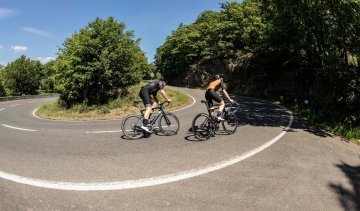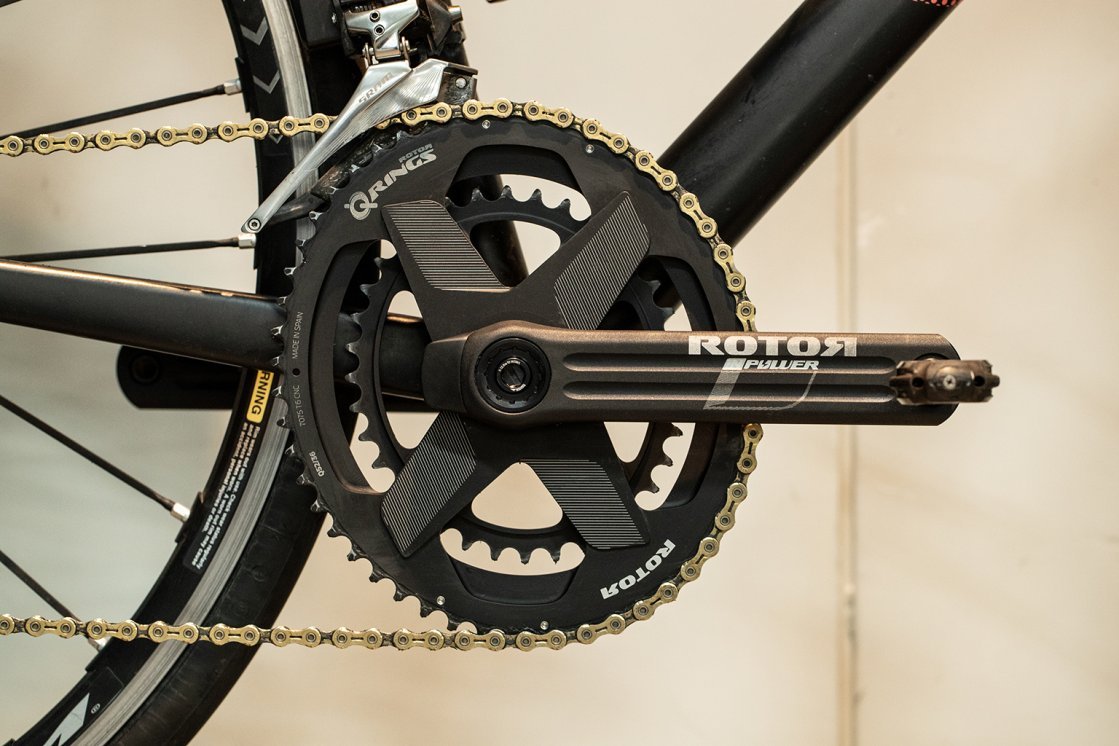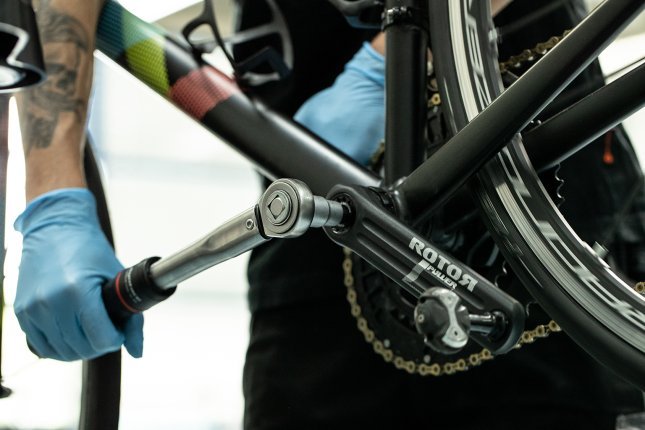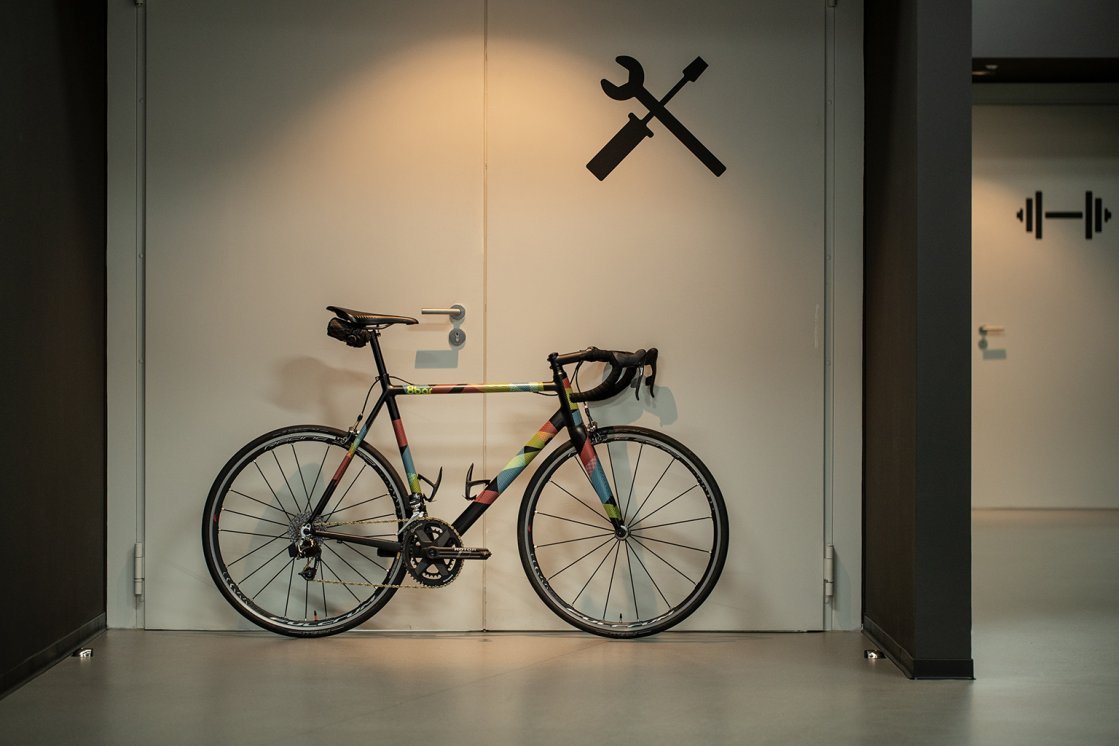
Shimano, Campagnolo or SRAM? Shifters & Deraill...
Whether you’re a sprinter or a mountain enthusiast, a nerd for classics or a fan of light materials, our tips will guide you to the right road bike system.
Rotor ALDHU 3D+ cranks are extremely flexible with direct mount. This also applies to the InPower power meter. Our riding impressions with oval chainrings.
Granted, I have never (!) ridden oval chainrings before. So whenever spoke about Q-Rings or Osymetric - I just shrugged. Until now. Standard on my bike is a power meter. One by Quarq. In this respect, I found it quite exciting to see whether I would subjectively feel a massive change compared to round chainrings when testing the Rotor InPower crank power meter with Q-Rings. And whether the oval chainrings compared to round ones would in any way affect my performance data.
The theory of oval chainrings says that with them you produce a more even load over the entire crank revolution: There is no dead centre and therefore the resistance at the pedal is always almost identical. No matter what crank position. But because I don't want to believe the theory out right I bolted the Rotor InPower cranks to my 8bar Kronprinz V2, of course with Q-Rings, and went on making my personal assessment...

The oval chainrings called Q-rings provide even resistance on the pedal over the entire crank revolution.
And lo and behold: I found the Q-rings particularly pleasant on ascents. Very pleasant, actually. Because with pull and push, the resistance was very constant, as far as I could tell. I quickly got used to the oval chainrings: Within two small rides, still in the double-digit kilometre range, I felt it was normal. It was interesting that I did not need any adjustment when switching to another bike with round chainrings. It went super smooth, i.e. without any adjustment phase.

The assembly is, in short: simple!
The term direct mount already implies this: The mounting of the Q-rings on the crank was extremely simple. And also the assembly of the power meter crankset on my bike went smoothly: In no time a standard BSA bottom bracket by Rotor was installed, the drive side (axle, crank and chainring bolted together) was pushed through the bottom bracket shell and then the non-drive side equipped with the left crank. Before that, the battery was inserted into the axle, the connection to the bike computer, a Wahoo Bolt, was made and the assembly was finished. At the beginning I experimented a little bit with the alignment of the oval chainrings - where the "bulbous" and “flat” sections of the ring are in relation to the crank. I went to both extremes, only to find myself in the middle setting after a very short time. That's where I felt best. However, I have no ailments in my knees or elsewhere that would make me sensitive in this respect. Therefore, my recommendation: Try it out.

8bar Kronprinz v2 with Rotor InPower DM power meter.
Even though the Rotor InPower belongs to the category of crank power meters, the power is not measured there at all. Instead of in or at crankarm, Rotor measure torque input at the crank axle. This technically happens more on the left-side, but because the measurement takes place in the axle it really doesn’t matter. Either way, as a cyclist you don't notice it in action. Therefore, it is only mentioned for the sake of thoroughness. The electronics are well protected in the bottom bracket shell and are safe from external influences. From water, for example. And speaking of electronics: You also don't have to worry about the battery and/or its runtime. 300 hours of operating time are possible. At least in my case - plus/minus my sloppiness in the exact time tracking. Nevertheless, it is unproblematic to change the battery when necessary. In short, take of the left crankarm, change the battery, put it back on and done. On the bike, when power is there, the full range of performance measurement is available: power, cadence, torque efficiency and pedal stroke.

Tester Stephan, also known as the locomotive. This picture shows why.
In the two and a half months that I rode the Rotor InPower - including the Bimbach Cycling Marathon with 400 km in two days - I could not detect any change in my performance through the Q-Rings based on the data that the Rotor power meter transmitted to my Wahoo Bolt bike computer. It didn't make me feel better or worse.
However, the subjective feeling of pushing against the pedal in a more fluid and constant way, especially on the climbs, has turned out to be so positive that I am really taken with oval chainrings. Especially since I like to ride mountains, but without am not a good climber. A route for me must be hilly and varied. The classics in Belgium and Holland are exactly my thing in terms of profile. And this may sound strange but oval rings really round things out for me! Those who are considering switching to oval chainrings: The comparison with the data from the power meter was somehow reassuring because of the neutral result. Subjective as it is.